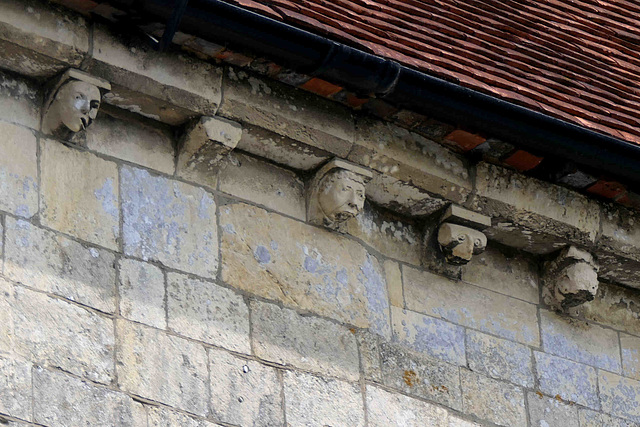Steyning - St Andrew and St Cuthman
Steyning - St Andrew and St Cuthman
Hardham - St Botolph
Hardham - St Botolph
Hardham - St Botolph
Hardham - St Botolph
Hardham - St Botolph
Hardham - St Botolph
Hardham - St Botolph
Hardham - St Botolph
Arundel - Cathedral
Arundel - Cathedral
Arundel - Cathedral
Arundel - St Nicholas
Arundel - St Nicholas
Arundel - St Nicholas
Arundel - Fitzalan Chapel
Chichester - Chichester Cross
Chichester - St Peter the Great / Duke & Rye
Chichester - Chichester Cathedral
Chichester - Chichester Cathedral
Chichester - Chichester Cathedral
Chichester - Chichester Cathedral
Steyning - St Andrew and St Cuthman
Steyning - St Andrew and St Cuthman
Sompting - St Mary the Blessed Virgin
Shoreham-by-Sea - St Nicolas Church
Shoreham-by-Sea - St Nicolas Church
Shoreham-by-Sea - St Nicolas Church
Shoreham-by-Sea - St Nicolas Church
Shoreham-by-Sea - St Nicolas Church
Shoreham-by-Sea - St Mary de Haura
Shoreham-by-Sea - St Mary de Haura
Shoreham-by-Sea - St Mary de Haura
Shoreham-by-Sea - St Mary de Haura
Bishopstone
Bishopstone - St Andrews
Bishopstone - St Andrews
Bishopstone - St Andrews
Bishopstone -St Andrews
Brighton -West Pier
Brighton - Kiosk
Brighton - Kiosk
Brighton - Flying Planes
Brighton - Clock Tower
Location
See also...
Keywords
Authorizations, license
-
Visible by: Everyone -
All rights reserved
-
9 visits
Steyning - St Andrew and St Cuthman


Steyning has existed since Anglo-Saxon times. Legend has it that St Cuthman, a Saxon saint, built a church here. King Alfred the Great's father, Æthelwulf of Wessex, was originally buried in that church, before being transferred to Winchester
To thank his Norman protectors for refuge during his exile, Edward the Confessor granted his church in Steyning, with its large and wealthy manor lands, to the Abbey at Fécamp. Steyning became a thriving town with a market, a royal mint. 60 years later Godwin, Earl of Wessex expelled the Norman monks in 1052 and seized Steyning for himself. This made sense as he did not want a Norman toehold in a potential invasion port, but William responded by swearing on a knife before setting out for England to recover it for the monks:
Upon his victory at Hastings, he honoured his promise and returned it to the monks. However, its strategic importance made William place William de Braose in a new castle at nearby Bramber, who began a vigorous boundary dispute with the monks.
The church of St Andrew and St Cuthman, begun around 1080, on the site of a lost Saxon church, the original Norman building was cruciform, and nearly twice the size of the present building. It had transepts and a much longer chancel than the present 19th century one, as well as two extra bays at the west end of the nave, where the 16th century flint chequerwork tower now stands.
Many of the corbels have grimacing faces
To thank his Norman protectors for refuge during his exile, Edward the Confessor granted his church in Steyning, with its large and wealthy manor lands, to the Abbey at Fécamp. Steyning became a thriving town with a market, a royal mint. 60 years later Godwin, Earl of Wessex expelled the Norman monks in 1052 and seized Steyning for himself. This made sense as he did not want a Norman toehold in a potential invasion port, but William responded by swearing on a knife before setting out for England to recover it for the monks:
Upon his victory at Hastings, he honoured his promise and returned it to the monks. However, its strategic importance made William place William de Braose in a new castle at nearby Bramber, who began a vigorous boundary dispute with the monks.
The church of St Andrew and St Cuthman, begun around 1080, on the site of a lost Saxon church, the original Norman building was cruciform, and nearly twice the size of the present building. It had transepts and a much longer chancel than the present 19th century one, as well as two extra bays at the west end of the nave, where the 16th century flint chequerwork tower now stands.
Many of the corbels have grimacing faces
Paolo Tanino has particularly liked this photo
- Keyboard shortcuts:
Jump to top
RSS feed- Latest comments - Subscribe to the comment feeds of this photo
- ipernity © 2007-2024
- Help & Contact
|
Club news
|
About ipernity
|
History |
ipernity Club & Prices |
Guide of good conduct
Donate | Group guidelines | Privacy policy | Terms of use | Statutes | In memoria -
Facebook
Twitter

Sign-in to write a comment.